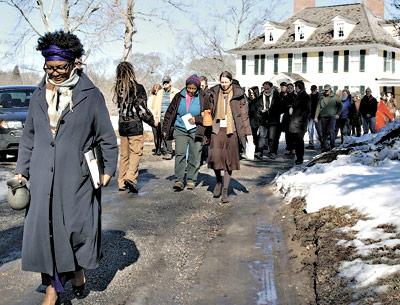The Mast-Head: Cold Weather Wanted
The Mast-Head: Cold Weather Wanted
There has been good ice here, and I mean really good ice, for the first time in quite a few years. This means that those of us with iceboats tucked away in garages and barns have been busy digging them out and heading for Mecox Bay.
Because we had set aside Saturday to celebrate our 4-year-old son’s birthday, I did not get to my boat until Sunday morning. The bag containing several key bolts and my foot spikes was in the basement, and the rest, more or less, in the barn in East Hampton behind my mother’s house.
To get to the boat, I first moved a stack of plywood we keep to board up the office windows in case of a hurricane. It had been perhaps three years since I had the thing out; dust and mouse droppings covered the runner plank and steering platform. Although I never did find the three folding stands needed to lift up the boat to put on the runner blades, three years storage was otherwise of no significance for a boat that was built in the 1920s.
The Batwing, as we call it, was a gift long ago from Dr. George Fish, a friend of the family, who had lived at Three Mile Harbor. I don’t know where he got it, nor did I know of any other batwings being sailed here until Sunday, when I heard that John Halsey, of the Water Mill Halseys, had bought one and restored it to fine working order.
Bud Topping, before he died in 2006, had told me there was another bat in the rafters of a local barn that would have been mine for the asking, but I never did get around to following up on it. Now no one seems to know where it is. Once you get the bug anything can happen, but I suppose that one is really enough.
Unfortunately, there wasn’t a lick of wind at Mecox all day, and I spent much of it answering questions from onlookers instead of sailing. The conditions were perfect for skating, though, and small groups headed out on the bay, some going all the way from Flying Point nearly to Horse Mill Road, a distance of about two and a half miles there and back.
By Monday evening, as I wrote this, the Batwing was back in the barn, and now all the pieces were there. If work and the weather are in alignment, I may be able to sail yet, making the best of this cold, long winter.

